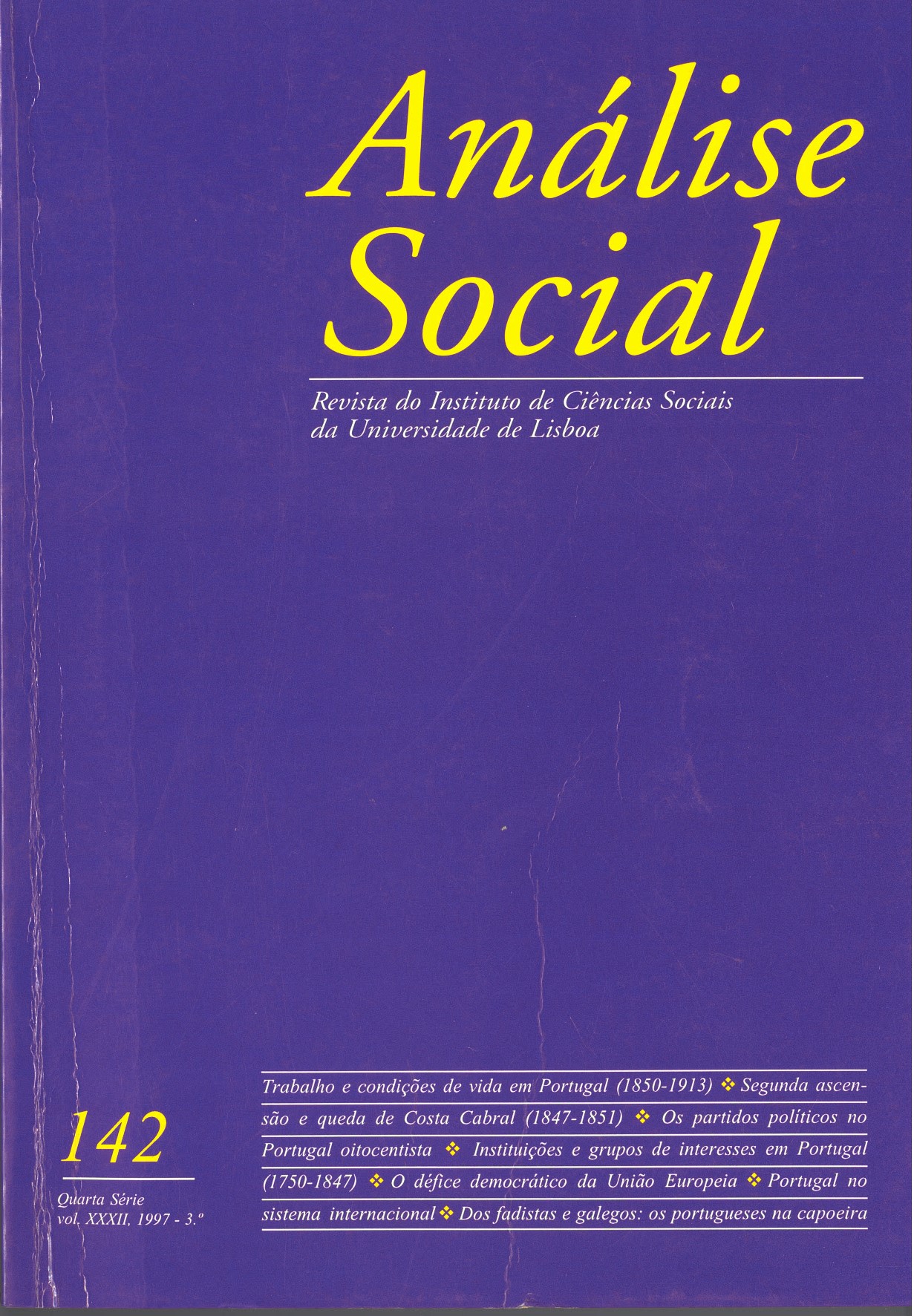Dos fadistas e galegos: os portugueses na capoeira
DOI:
https://doi.org/10.31447/AS00032573.1997142.07Palavras-chave:
cultura da capoeira, Rio de Janeiro, século XIX, presença de imigrantes, imigrantes portuguesesResumo
A presença de imigrantes, principalmente portugueses, e homens brancos nas maltas da Corte do segundo reinado era sinal da riqueza e da complexidade da cultura da capoeira no Rio do século XIX. Hábil o bastante para sobreviver a décadas de feroz perseguição e flexível o suficiente para incorporar os elementos mais díspares e de origens mais diversas, a capoeira demonstrou nestes anos a sua força como «porta de entrada» na cidade para estranhos, forasteiros e desamparados. Italianos, argentinos, paraguaios, alemães, norte-americanos, chilenos, franceses, espanhóis, uma babel de nacionalidades diversas escondia-se nas sombras da capoeiragem. Construída por africanos em terras brasileiras, a capoeira vai ter o seu destino marcado pelo carácter cosmopolita da capital do império. Podemos arrematar a participação maciça de imigrantes portugueses dentro das maltas de capoeiras por três factores distintos: primeiro, os portugueses eram a esmagadora maioria dos estrangeiros na cidade e formavam uma boa parte da população trabalhadora. Em segundo lugar, a vida cultural das camadas urbanas mais empobrecidas em Lisboa e nas maiores cidades de Portugal aproximava-se bastante da cultura urbana das incipientes cidades brasileiras do século XIX. A cultura escrava carioca somada ao mundo do «fadista» lusitano produziu uma simbiose do Rio de Janeiro dos últimos decénios do século XIX e que até hoje marca a alma da cidade. A proximidade de condições de vida e trabalho e os laços de solidariedade tecidos pelo infortúnio e pela miséria sugerem ser a capoeira muitas vezes o elo fundamental entre culturas separadas por quilómetros de oceano e séculos de história. Irmanados na mesma desdita, africanos, crioulos e portugueses no Rio de Janeiro pós-1850 demonstraram aos seus contemporâneos e aos homens do futuro quanto a cultura poderia ser transformada pelos seus agentes mais humildes.



